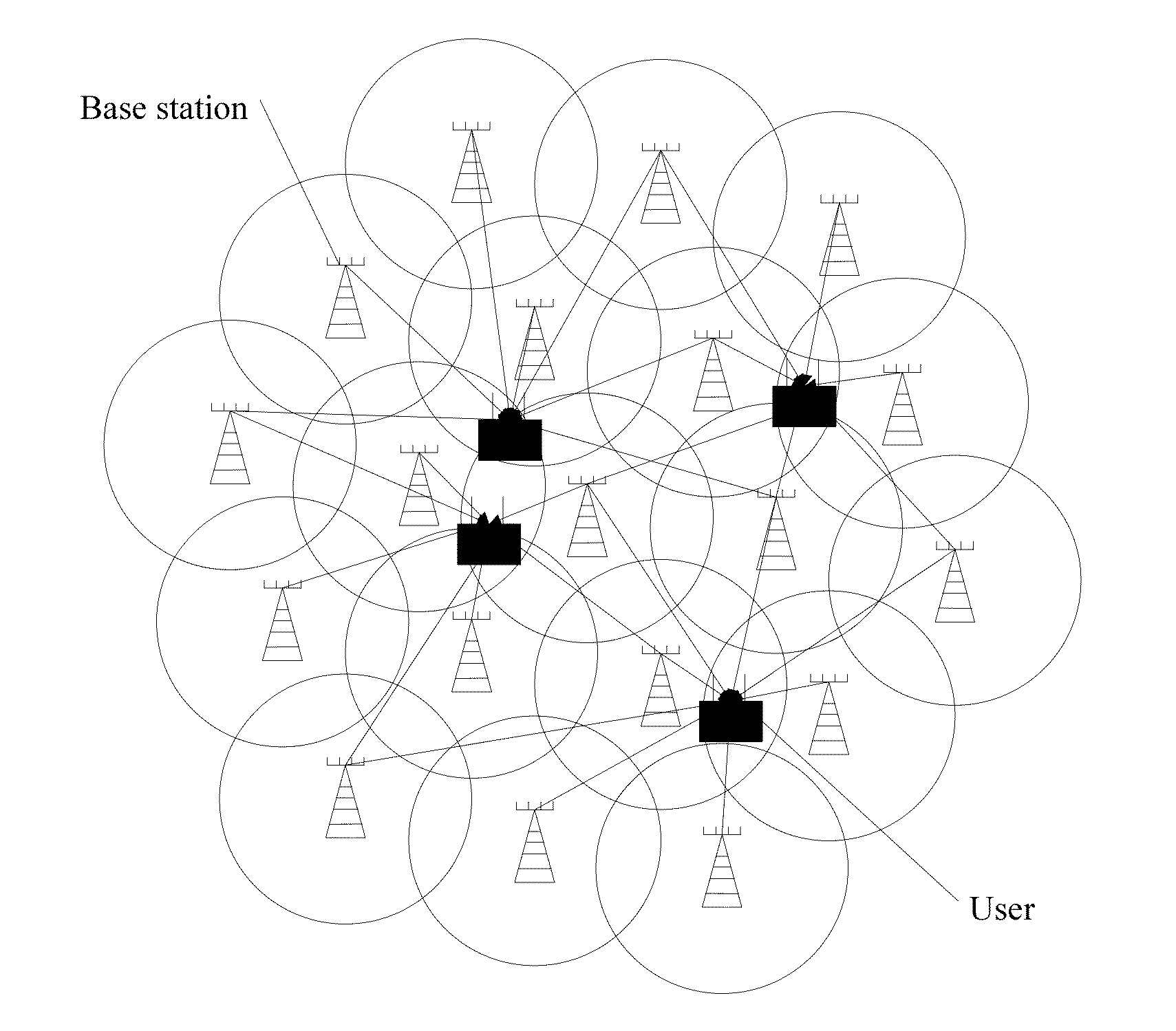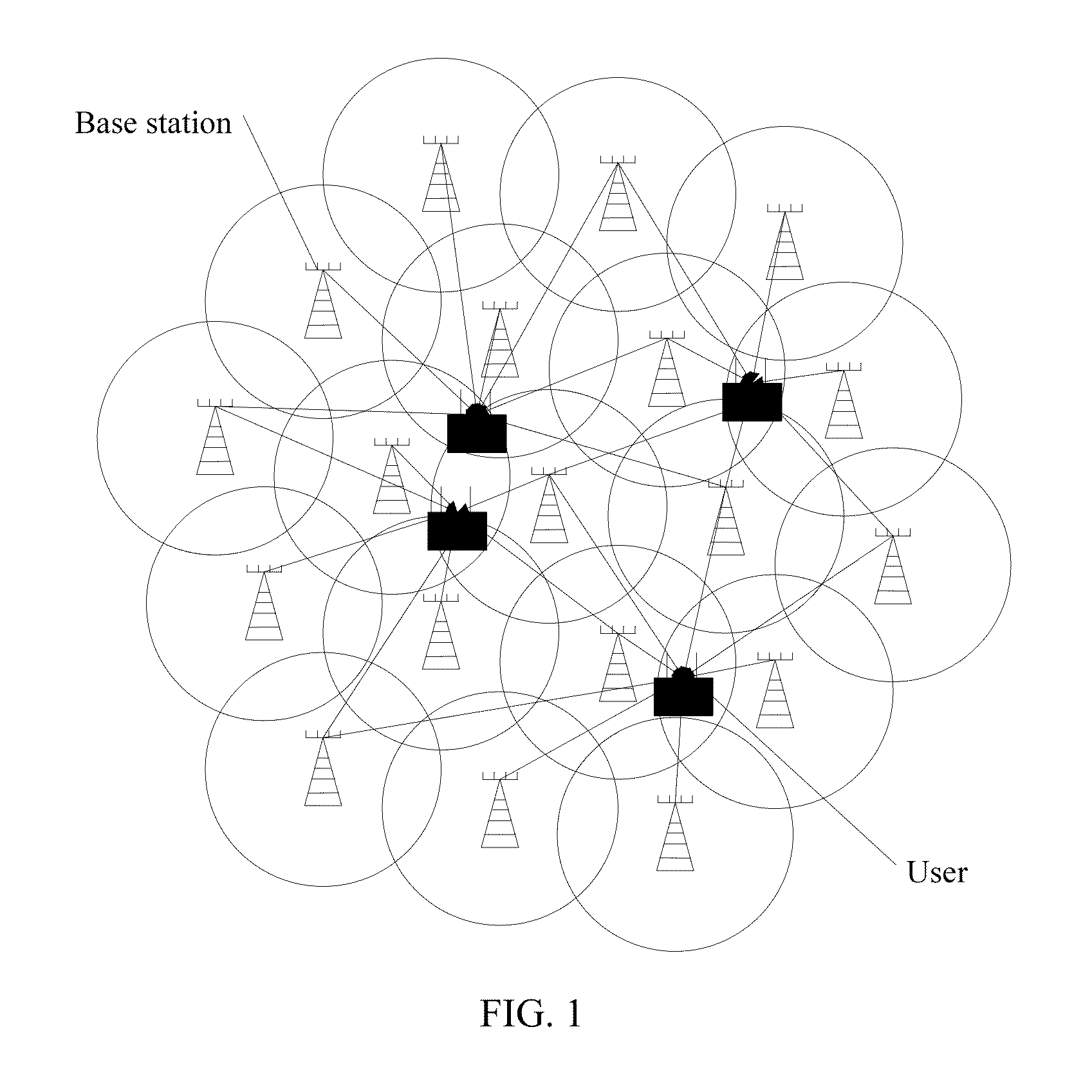Method, Terminal And Base Station For Multi-User Interference Suppression
a multi-user interference and base station technology, applied in the field of communication, can solve the problems of poor channel estimation accuracy of receivers, existing dm-rs that cannot support orthogonality between cells, and inability to support mu-mimo mode of comp systems well, so as to improve channel estimation accuracy and support the comp mode.
- Summary
- Abstract
- Description
- Claims
- Application Information
AI Technical Summary
Benefits of technology
Problems solved by technology
Method used
Image
Examples
embodiment 1
[0032]As shown in FIG. 3, Embodiment 1 of the present invention provides a data sending method. The method may be applied to a CoMP system as shown in FIG. 1, or to other communication systems, such as an LTE-A system. The method includes the following steps.
[0033]S301: Obtain precoding matrix of the paired users according to a channel matrix of each of the paired users, where the paired users are a set of multiple users sharing the same time-frequency resource and receiving and sending data on the same time-frequency resource simultaneously.
[0034]It should be noted that, in the MIMO system, each terminal only has one antenna, the difference between channel conditions of the users is great, and the difference of large-size fading in different antennas is large. By using a specific scheduling mechanism, users meeting a requirement are selected and grouped into one group so that successfully grouped user antennas form a virtual multi-antenna array and are receiving and sending data on...
embodiment 2
[0045]Correspondingly, as shown in FIG. 4, Embodiment 2 of the present invention provides a data receiving method. The method may be applied to a CoMP system as shown in FIG. 1, or to other communication systems, such as an LTE-A system. The method includes the following steps.
[0046]S401: A user receives data sent by a base station.
[0047]It should be noted that in the embodiment of the present invention, the user refers to any user in the paired users, where the paired users are a set of multiple users sharing the same time-frequency resource and receiving and sending data on the same time-frequency resource simultaneously.
[0048]In addition, it should be noted that in the embodiment of the present invention, data sent by the base station is data after layer mapping and precoding, and layer mapping and precoding belong to the prior art, which is described in detail in Embodiment 1 of the present invention, and is not repeated herein any further.
[0049]S402: The user demaps the receive...
embodiment 3
[0066]As shown in FIG. 5, Embodiment 3 of the present invention provides a multi-user interference suppression method, where the method is applied to a CoMP system shown in FIG. 1, or other communication systems, such as an LTE system. The method includes the following steps.
[0067]S501: A base station combines service data of paired users and a common pilot sequence based on the paired users into a data frame, and transmits the data frame to the paired users at the same band.
[0068]It should be noted that, in the MIMO system, each terminal only has one antenna, the difference between channel conditions of the users is great, and the difference of large-size fading in different antennas is large. By using a specific scheduling mechanism, users meeting a requirement are selected and grouped into one group so that successfully grouped user antennas form a virtual multi-antenna array and are receiving and sending data on the same time / frequency resource. The successfully grouped users ar...
PUM
 Login to View More
Login to View More Abstract
Description
Claims
Application Information
 Login to View More
Login to View More - R&D
- Intellectual Property
- Life Sciences
- Materials
- Tech Scout
- Unparalleled Data Quality
- Higher Quality Content
- 60% Fewer Hallucinations
Browse by: Latest US Patents, China's latest patents, Technical Efficacy Thesaurus, Application Domain, Technology Topic, Popular Technical Reports.
© 2025 PatSnap. All rights reserved.Legal|Privacy policy|Modern Slavery Act Transparency Statement|Sitemap|About US| Contact US: help@patsnap.com



